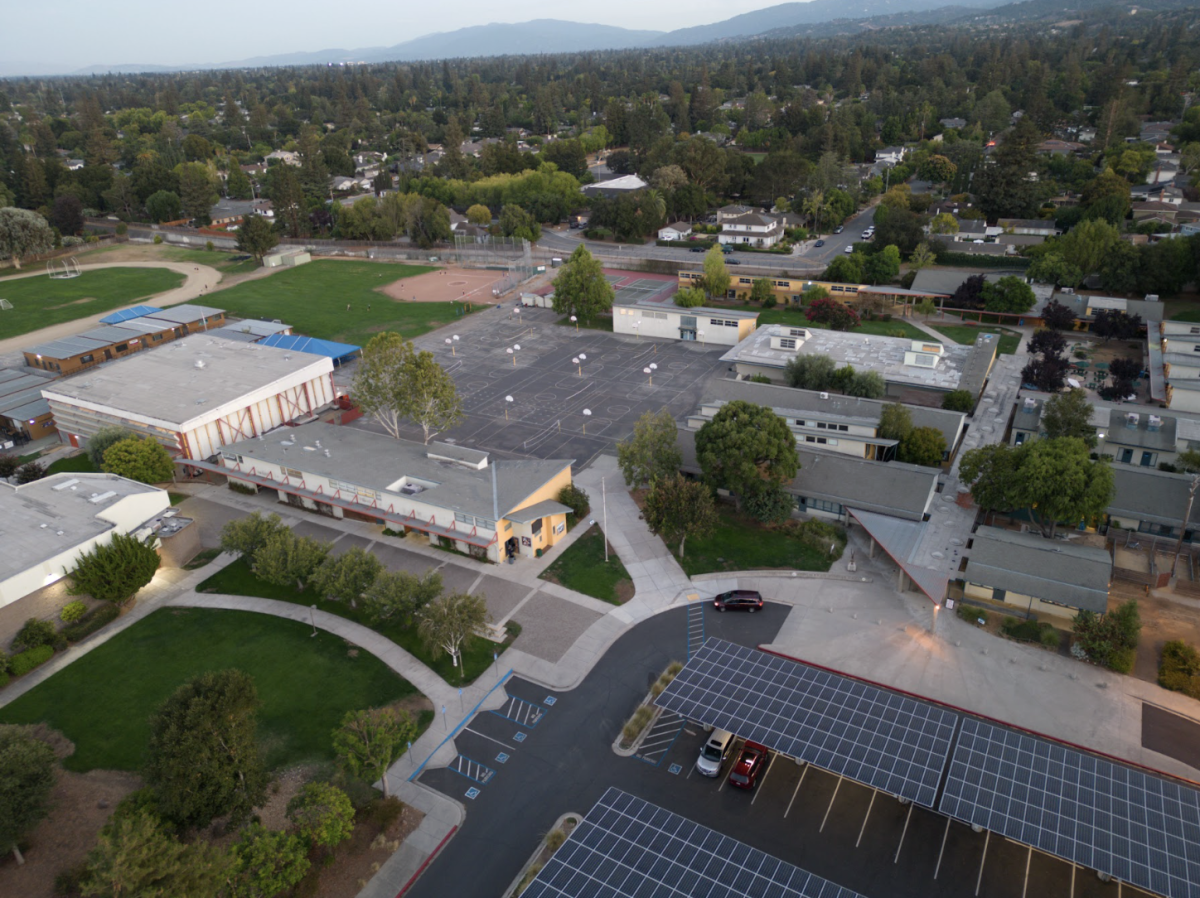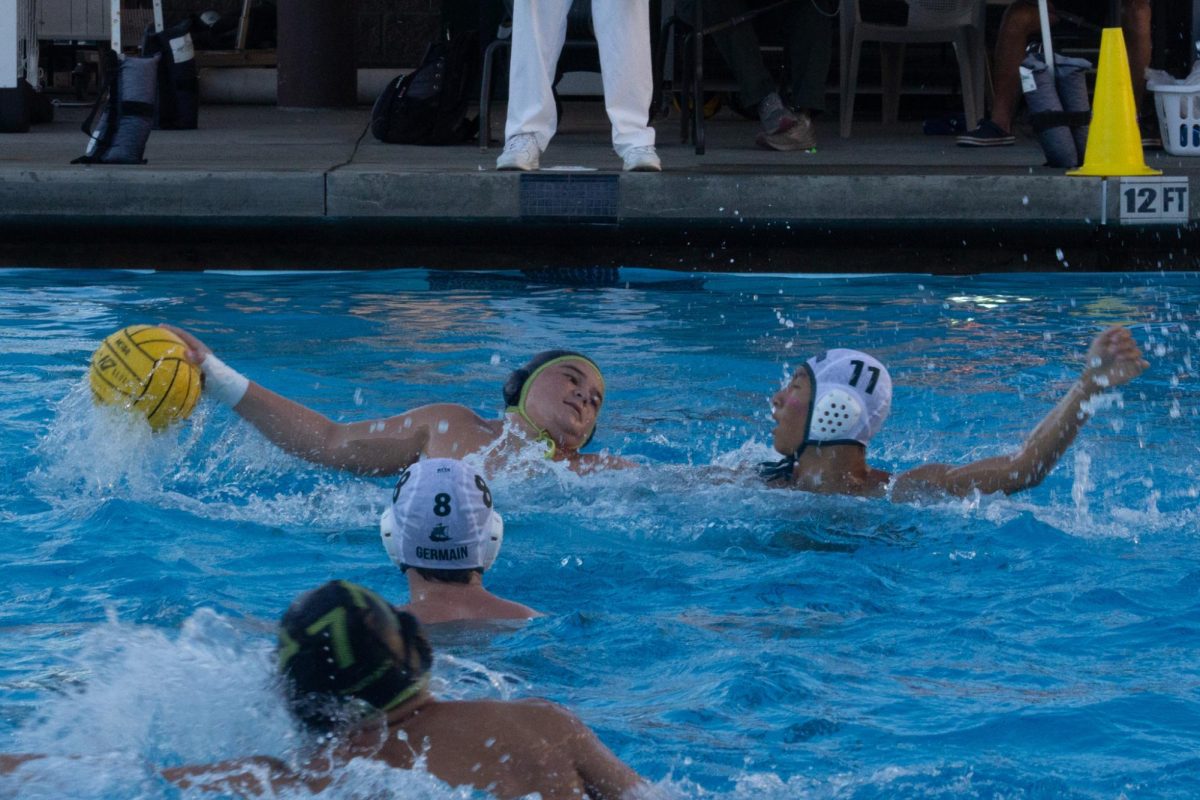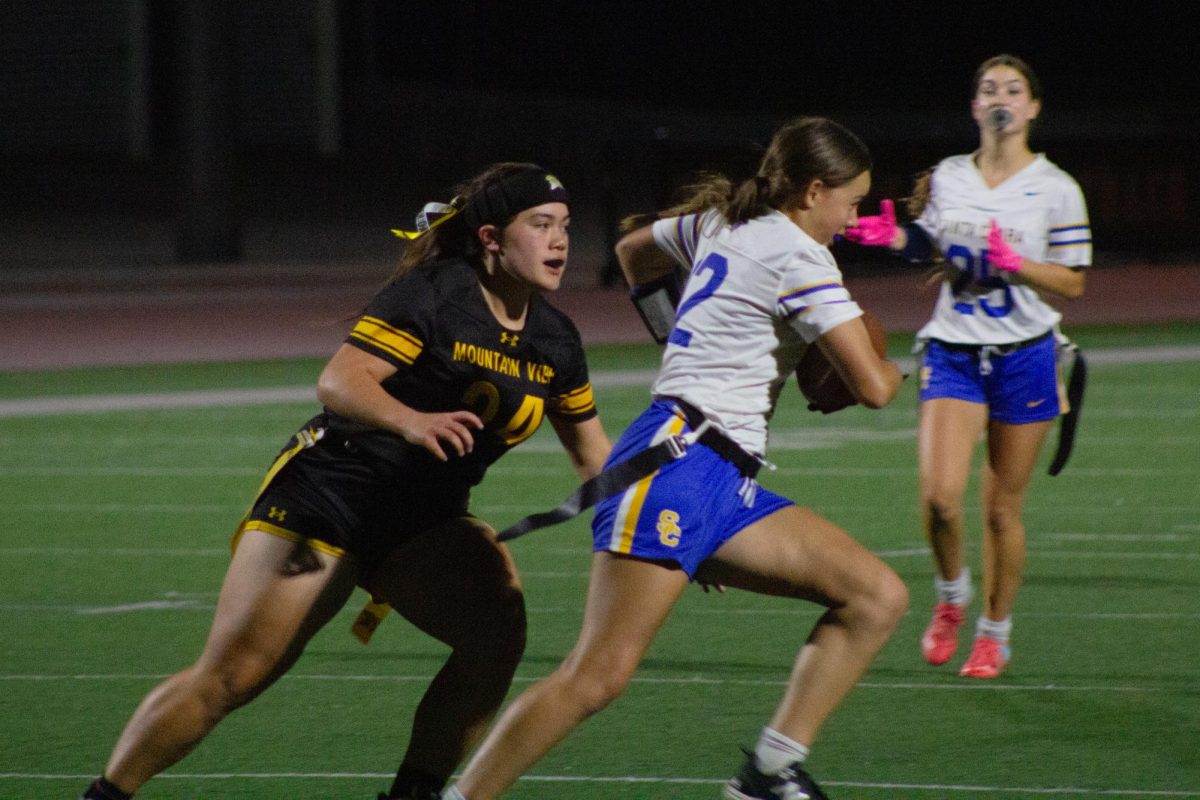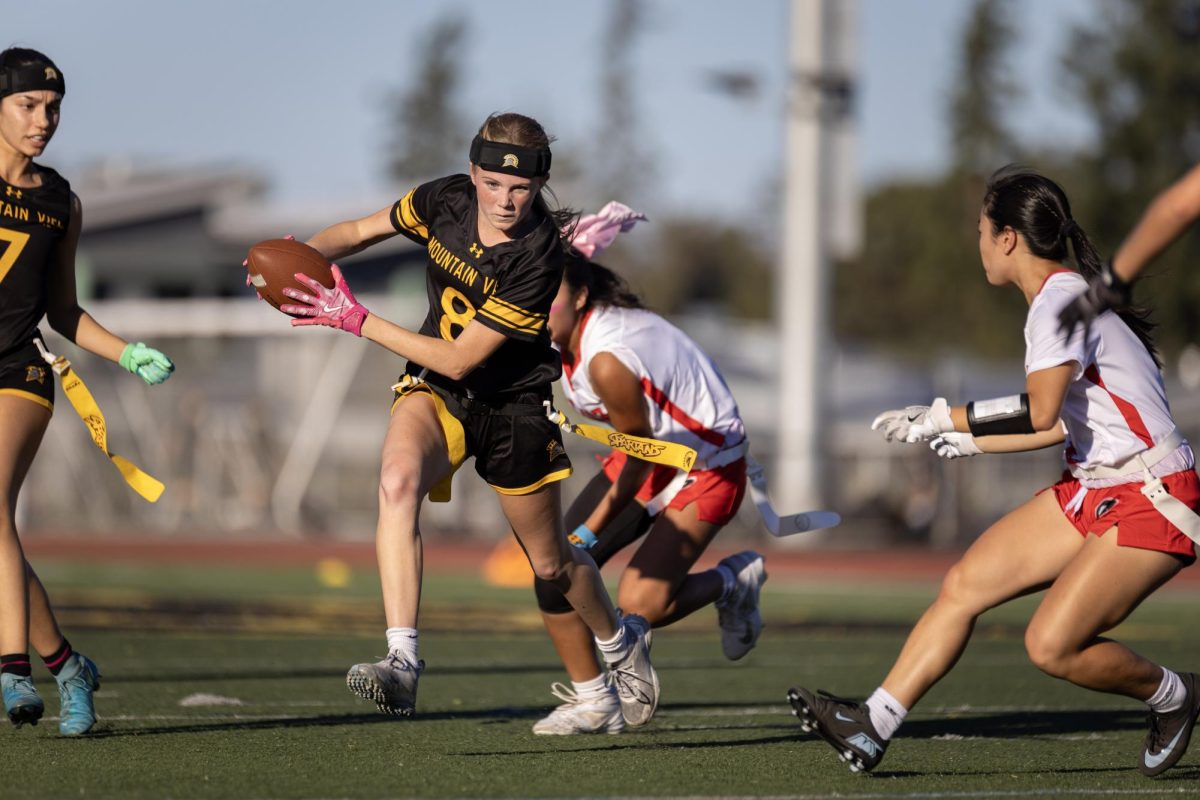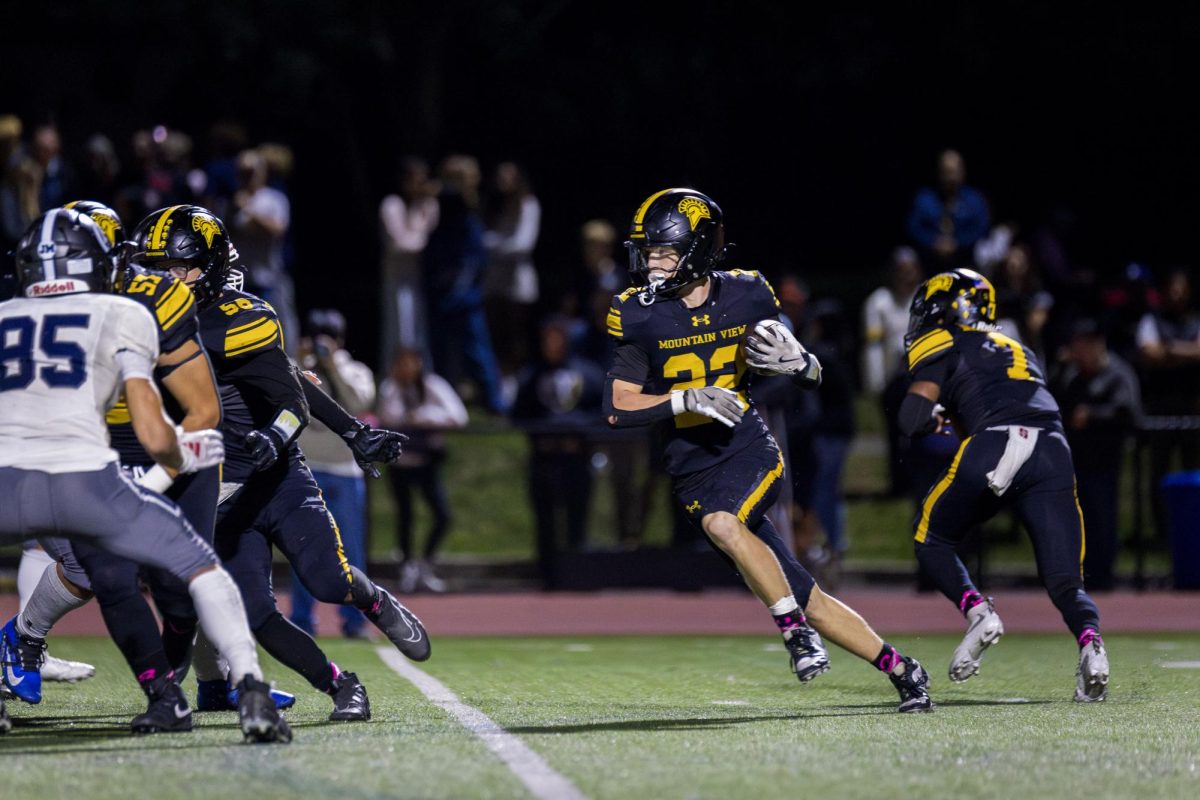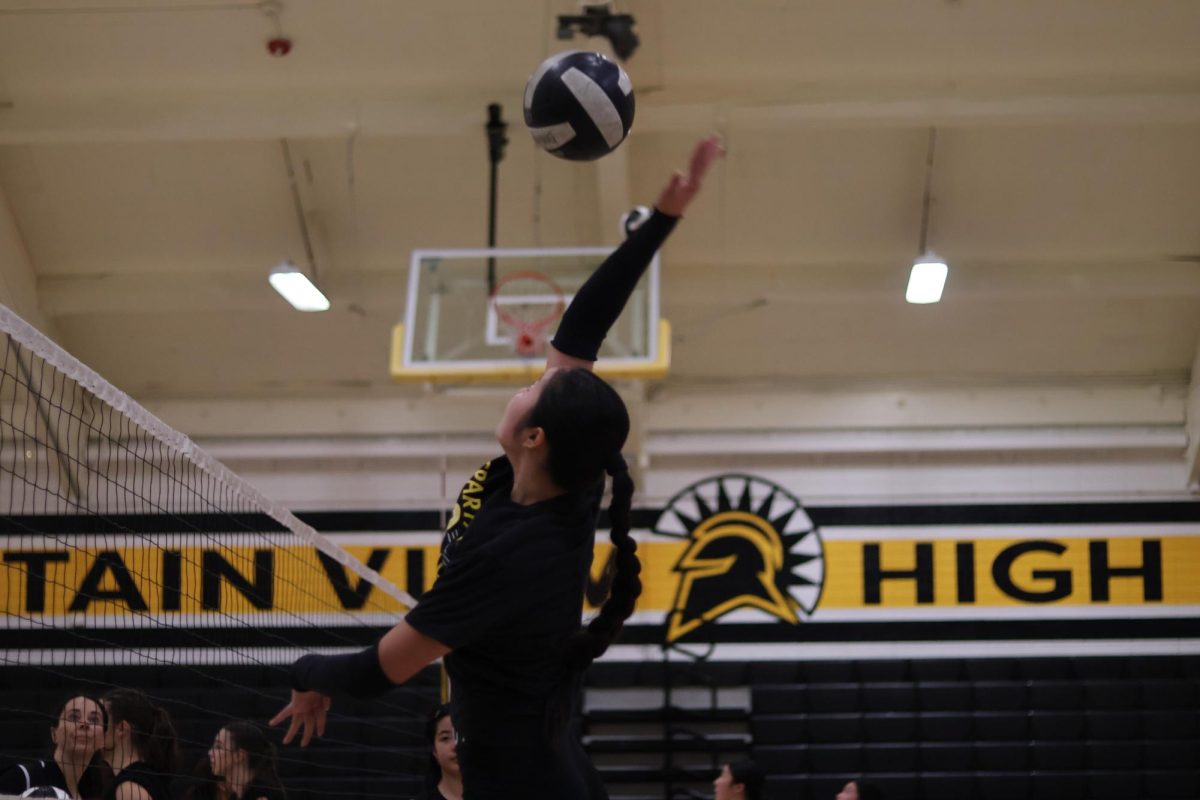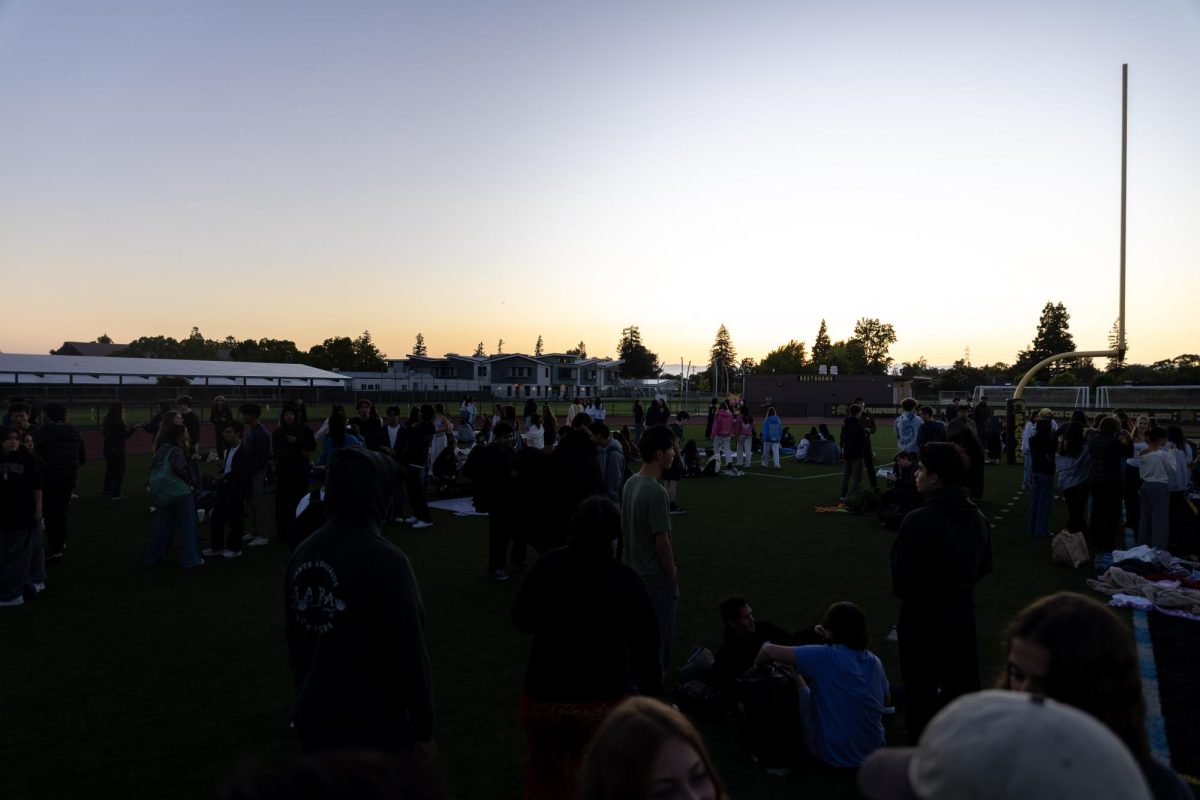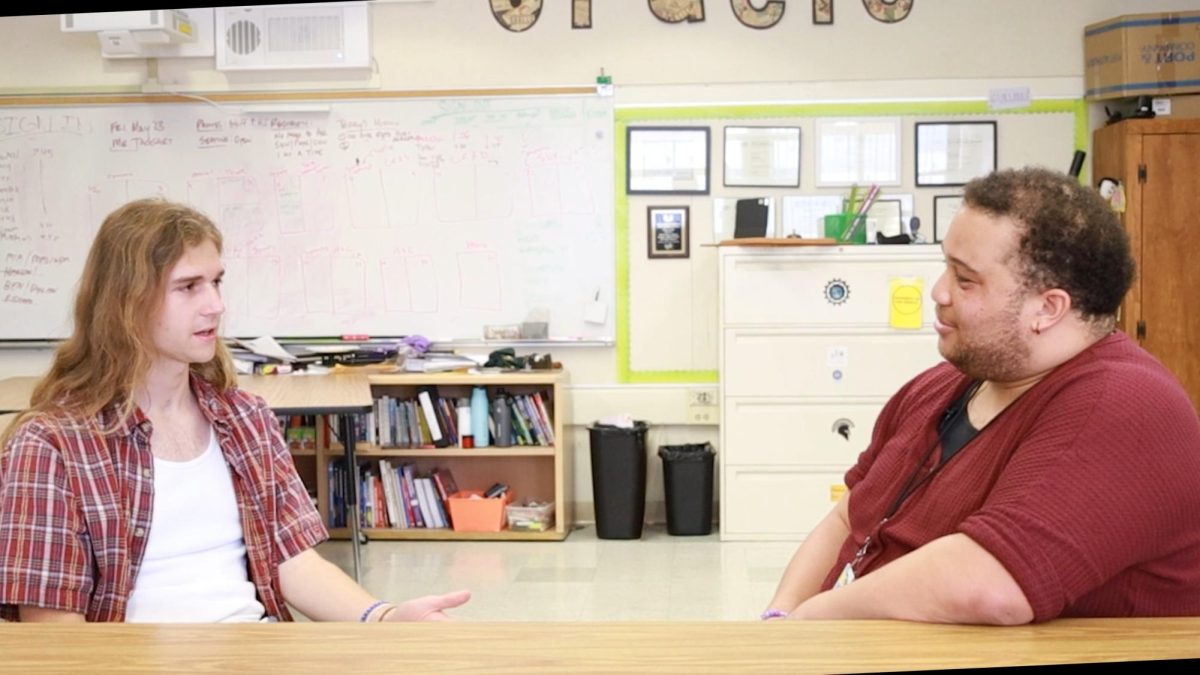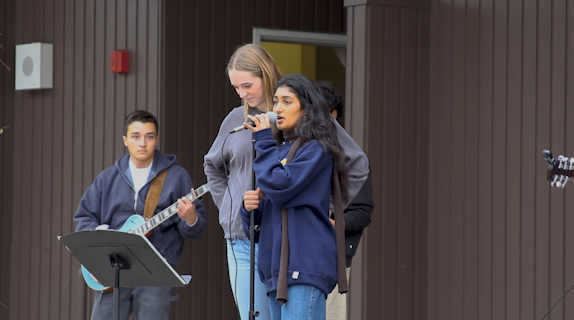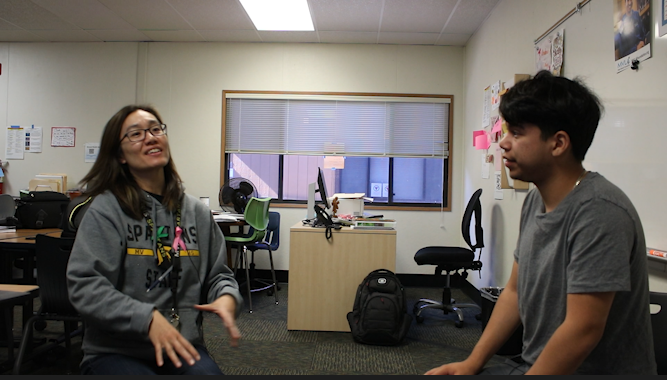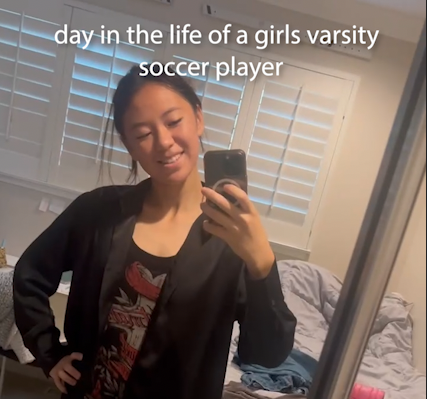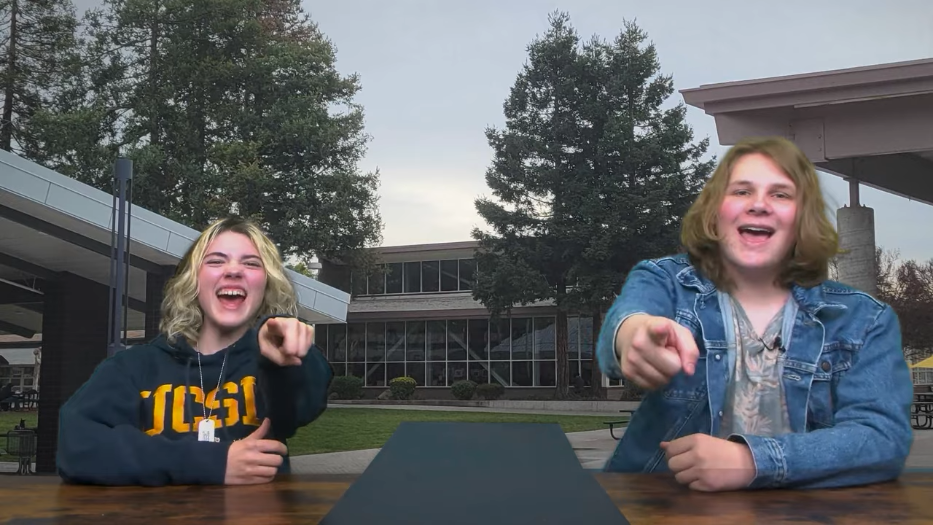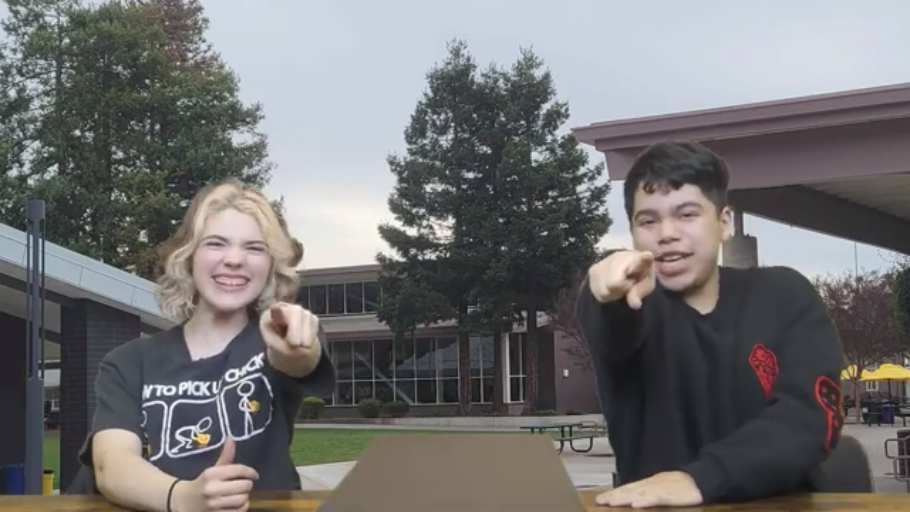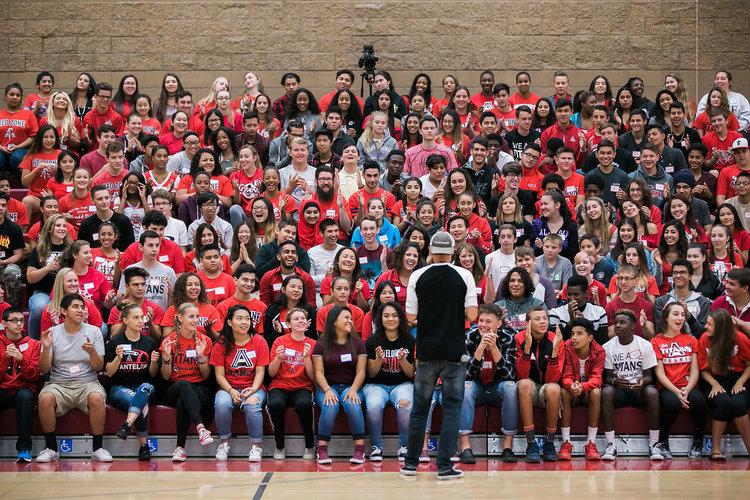After the week of Feb. 10, white stickers with pen-written compliments were strewn across campus. Ambassadors facilitated Breaking Down the Walls, a third party community-building program from the company Learning for Living. The program started with a full school assembly to hear a speech from program director Stu Cabe, followed by two full days of community building activities in the gym.
AVID juniors and Ambassadors led groups of participants through activities. Ambassadors requested that the entire sophomore class participate, though students had the option to opt-out, along with a smaller number of freshmen and juniors.
In the weeks following the event, Ambassadors has been evaluating the program’s effectiveness to gauge its value in continuing to implement BDTW or another program in the future.
According to Spanish teacher and Ambassadors adviser Lauren Camarillo, she personally introduced the program because she had a positive experience with the program in her former teaching position in San Jose. According to Camarillo, inviting the program was part of an overall effort to increase school community connectedness in Ambassadors.
Camarillo referenced results from the California Healthy Kids survey as a major push factor, in which questions relating to feeling connected to the school community averaged at around a 60 percent satisfaction rate for juniors.
Camarillo said the results were not good enough. Since the first semester, when Ambassadors studied that data, increasing school connectivity and community became a major goal for Ambassadors, according to Camarillo.
We need to do something about students feeling like they go to school but they don’t belong at school
“We need to do something about students feeling like they go to school but they don’t belong at school,” Camarillo said.
District Wellness Coordinator William Blair, who had a more removed and administrative role in facilitating the event, said he is a “strong believer” in third-party programming and thought it was a viable strategy in increasing community.
“I think organized programming that’s building connections, that’s empowering young people, that’s building empathy, and building communication, and building awareness of others and having collective cohesive community values and community goals is needed,” Blair said.
Camarillo said that choosing BDTW did not involve looking at research or statistics-based evidence for its effectiveness because research for school climate programs often do not exist.
Rather, measuring the effectiveness of third party programs such as BDTW or another popular program formerly at the school called Challenge Day, is often reliant on anecdotal feedback since it is difficult to measure intangible variables such as school connectivity numerically.
Cabe designed the curriculum for BDTW. Cabe’s credentials include a double master’s in education, a bachelor’s degree in acting, and 20 years of experience as a professional performer, though Cabe said he was also a high school drama teacher for four years.
The more you know about somebody, the less likely you are to treat them badly
“The program [BDTW] is designed to say: the more you know about somebody, the less likely you are to treat them badly,” Cabe said.
According to Ambassadors co-president Ivonne Lares, who both helped promote the event and led a group of students, Cabe gave training to all student leaders before the event for three periods. Lares said Cabe taught them how to run each of the planned activities.
Camarillo said Ambassadors chose all of the sophomore class to participate because freshmen already have freshmen orientation, and in her experience speaking to students about their experiences, sophomore year seems to be a time of social and academic adjustments in a student’s life.
Cabe said he entered the industry for designing high school programs after his involvement with Link Crew, a paid freshmen orientation curriculum, at his last teaching post. Cabe referenced research used in the BDTW curriculum from the book The Bully, the Bullied, and the Bystander by anti-bullying advocate and former schoolteacher Barbara Coloroso that claimed an instance of bullying will stop in seven seconds if you get the victim out of the situation because it removes the target of an aggressor and diffuses the situation.
However, Cabe said his curriculum is less focused on bullying, which he said he believes is a “grown-up” word with a narrow definition that does not include general unkindness or the bystander effect. He said his curriculum is more centered on fostering new social connections and understanding through social interaction.
Blair said he was open to Camarillo’s suggestion of Cabe’s program because he was looking to try a different inclusivity or diversity program from past years such as Camp Metamorph, which was canceled last year, and Challenge Day, another community-building program still used at Los Altos High School.
According to Blair, Challenge Day was not proving effective at the school since it had a very low participation rate, and inviting an entire grade would have cost the district upwards of 30 thousand dollars. Blair said he was interested in BDTW’s differences with Challenge Day. Challenge Day’s motive, according to their website, seems to be centered around bullying prevention and intervention than BDTW.
According to Lares, the purpose of having events such as third-party inclusivity programs are to encourage interaction that otherwise would have not happened.
We’re just trying to have opportunities for people to come in and get mixed around
“In Ambassadors what we noticed is that it’s hard for someone to go out there because there are a lot of groups that are already established and it’s hard to ‘get in there’. So we’re just trying to have opportunities for people to come in and kind of get mixed around,” Lares said.
According to Blair, the initial costs of the program were 11,900 dollars, a typical price for programs of the type. This does not include additional costs such as food and was funded by the PTSA, Wellness Budget, and Principal Site Funds.
According to Camarillo, 600 sophomore and junior participants filled out a feedback survey that Ambassadors is currently compiling to determine the overall success of the program as well as individual perspectives.
Cabe said he evaluates his program “constantly” and said he has changed parts of the curriculum or speeches in past years, mostly related to changing terminology or touching on issues such as gender identity or new thresholds of political correctness.
Sophomore Caitlin Davis, who participated in the program, said she was initially off-put by the assembly presentation likening kindness to being a “big” or “small” elephant in an extended metaphor on nature documentaries by Cabe, particularly when he called out students on their phones as “small elephants”, but had a better experience in the next two days.
“In general I just feel like he [Cabe] didn’t really do a good job gaining any respect from the students here [in the assembly] because he is a guest in our school, we don’t know him.” Davis said. “He doesn’t really identify himself with the students and just kind of sees everything as disrespect to him personally.”
According to Lares, who both helped promote the program and lead a group of students, the full-day program in the following days mostly consisted of team-building exercises rather than emotionally heavy activities. Lares said she enjoyed the experience.
Cabe said when he designed the curriculum, he intended for it to strengthen social interaction through games and fun activities. “We are playful in spirit and nature… That’s what allows us to feel comfortable and build relationships.”
Davis said the event started with many basic questions and activities, such as asking group members their favorite color or favorite song.
“I definitely liked some of the icebreakers, and it was a good way to get people to talk with each other without it getting really deep because it can be hard for some people to just talk to someone about [their feelings]” Davis said.
However, Davis said that though she overall enjoyed the games, she didn’t like the “weirdly forced intimacy” between participants. An activity that she said struck her as questionable was when participants had to sit on the knee of someone who they did not know, and then later go in the middle of a circle to wiggle their butt if they lost a round of the game.
“Having to touch people is an invasion of personal space for some people and that could make it a really uncomfortable day,” Davis said.
Both Davis and Lares said they enjoyed the “affirmations” part of the event, in which at the end of the day participants wrote compliments for each other on stickers.
According to Camarillo, the 600 person survey results are still being analyzed by Ambassadors. Camarillo stressed that in the future Ambassadors will continue to determine if the program fits the school and what parts of the specific program best fit or don’t fit the school.
“Overall the feedback was very positive. Many people said they were expecting it to be ‘lame’ but then they said it was pleasantly surprised,” Lares said.
Blair said it is very difficult to measure school climate, particularly since the only continuous survey attempting to measure it is the Healthy Kids Survey which is only conducted every two years.
Camarillo said it is hard to tell if a day of team building will have a lasting impact, particularly when combined with other Ambassadors campaigns, such as promoting mental health awareness but that she believes it was a worthwhile part of the effort.
“I think if our school didn’t do anything to make a positive impact we would harm our community by not doing anything,” Camarillo said.
Blair said there was no exit survey asking students to compare connectedness before and after the event because day-of-event data tends to be skewed positive even if actual results are not long-lasting.
Blair acknowledged seeing or hearing from students who did not like the program, and that it is difficult to have a grade-wide event that appeals to every student. However, he said when he visited the activities he thought it was an overall success.
When I [looked] across the room I [saw] positivity, I [saw] connectedness, I [saw] exactly what we want to build, the inclusion
“When I [looked] across the room I [saw] positivity, I [saw] connectedness, I [saw] exactly what we want to build, the inclusion,” Blair said.
Camarillo participated in many of the activities and said she felt far more connected to members of the school after than when she walked in. She said of what she saw she believes the event had an overall positive impact on the school.
“If he could have not had that introduction [at the assembly] or had another one I would have been really excited to go. [In the end,] it was really nice to kind of see that community bond at this school because we don’t see it all the time,” Davis said.
Featured picture shows Stu Cabe talking to an assembly of students of another school, beginning the Breaking Down the Walls program. Photo courtesy of the Learning for Living website.

